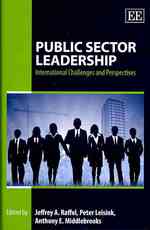- ホーム
- > 洋書
- > 英文書
- > Politics / International Relations
Full Description
An insider's look into the largely anonymous volunteers in local party organizations who make decisions in elections with profound implications for American democracy.
Although scholars have long recognized that local American parties play an important role in elections, surprisingly little is known about the individuals who lead these typically small, volunteer-based organizations. As David Doherty, Conor M. Dowling, and Michael G. Miller show in Small Power, local party leaders influence the electoral process in myriad ways: They recruit and support candidates, interface with state-wide and federal campaigns, and get out the vote in their communities. Drawing from a survey of over 850 Democratic and Republican local party chairs, a nationally representative sample of voters, and dozens of in-depth interviews, the authors describe how parties are organized, who party chairs are, and how they serve the party. Leveraging novel experiments that illuminate how chairs make choices about which individuals to recruit as candidates--as well as whether those choices reflect voters' preferences--Small Power sheds new light on how seemingly mundane local decisions can shape party goals, influence candidate pipelines, and affect who ends up winning elections. The book therefore offers unprecedented insight into the substantial influence that local parties and their chairpersons are positioned to wield and how they shape American politics.
Contents
I Local Party Organizations and the Electoral Landscape
1 Introduction
2 Local Parties and their Leaders
3 What Do Local Party Chairs Do?
4 Chairs and Candidates: Recruiting and Support
5 Local Parties and Election Outcomes
II How Chairs View Candidates
6 Introduction to Part II
7 Money, Commitment, and Community Ties
8 Candidate Gender
9 Candidate Race and Ethnicity
10 Candidates' Policy Dispositions
11 Small Power
Appendices
A Appendix
A.1 Additional Analysis
A.1.1 Additional Analysis: Part I
A.1.2 Additional Analysis: Part II
References
Index




